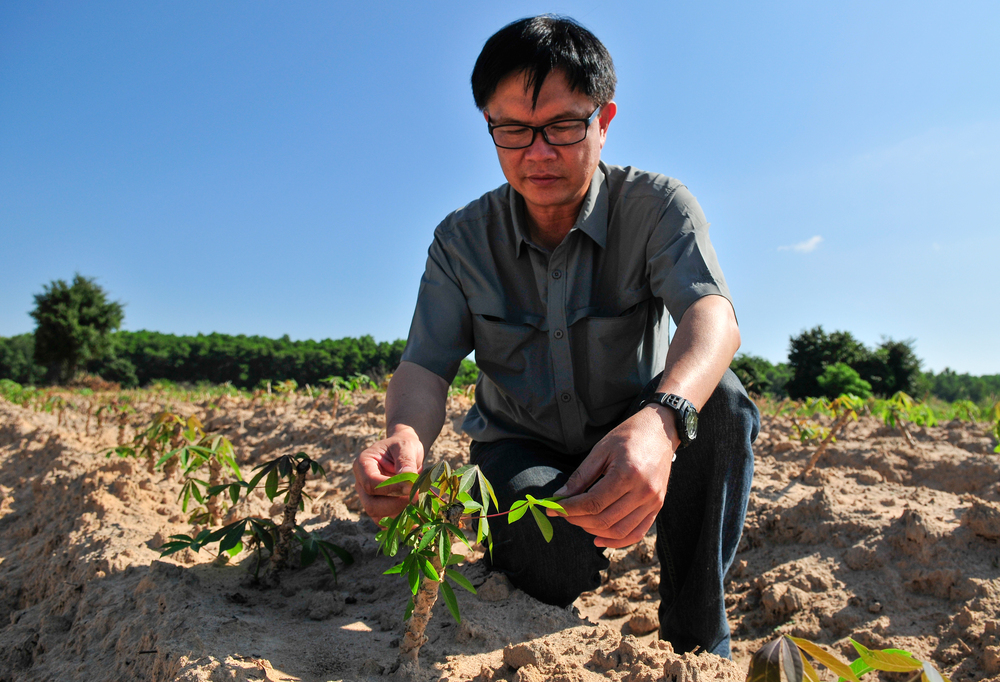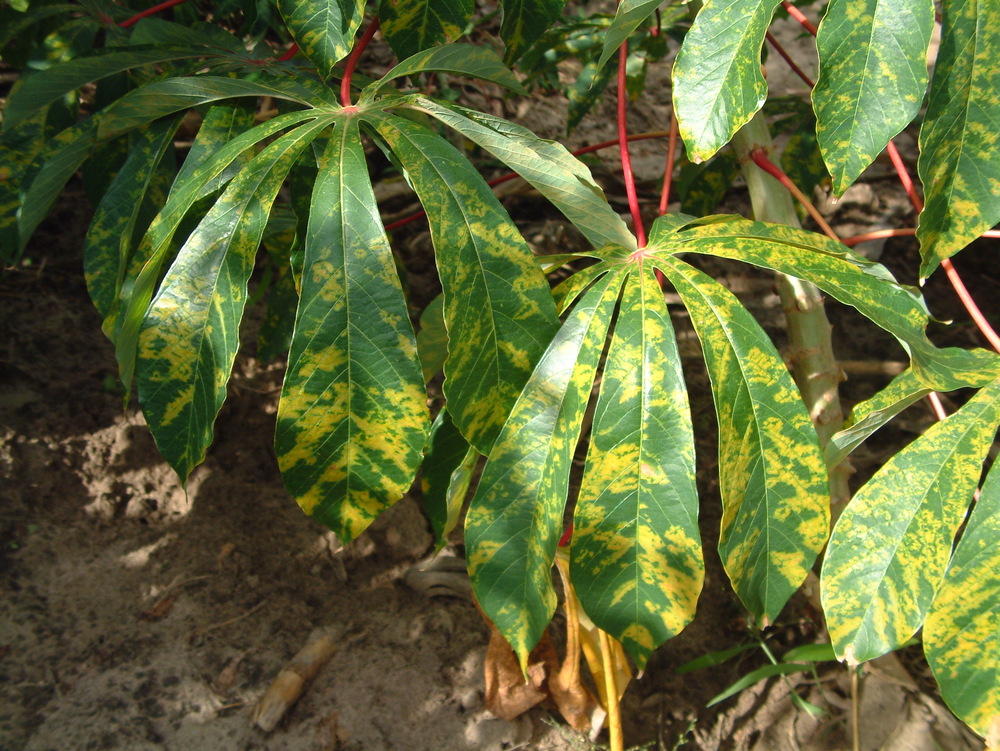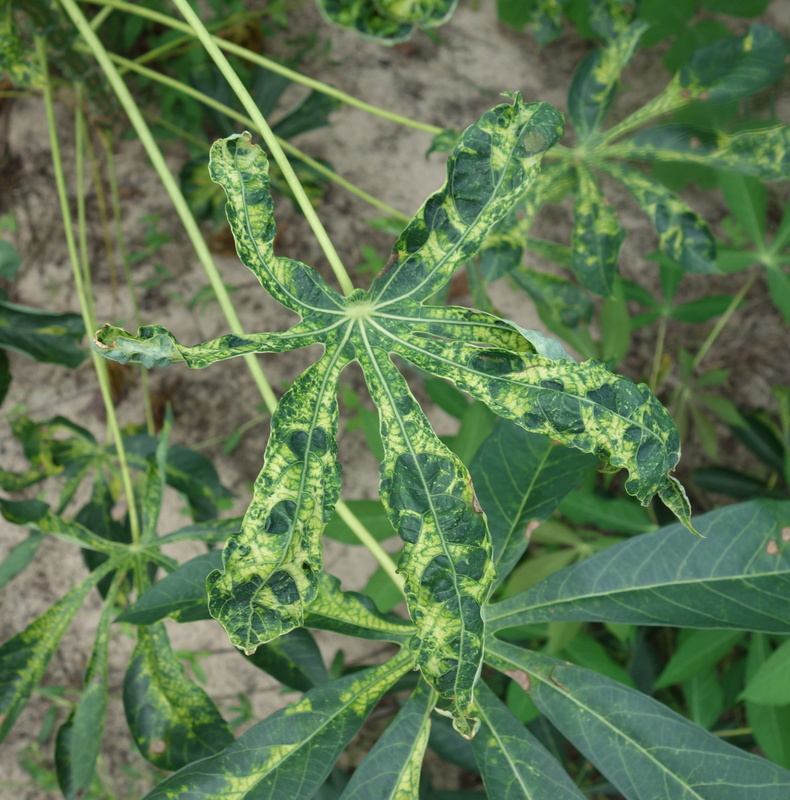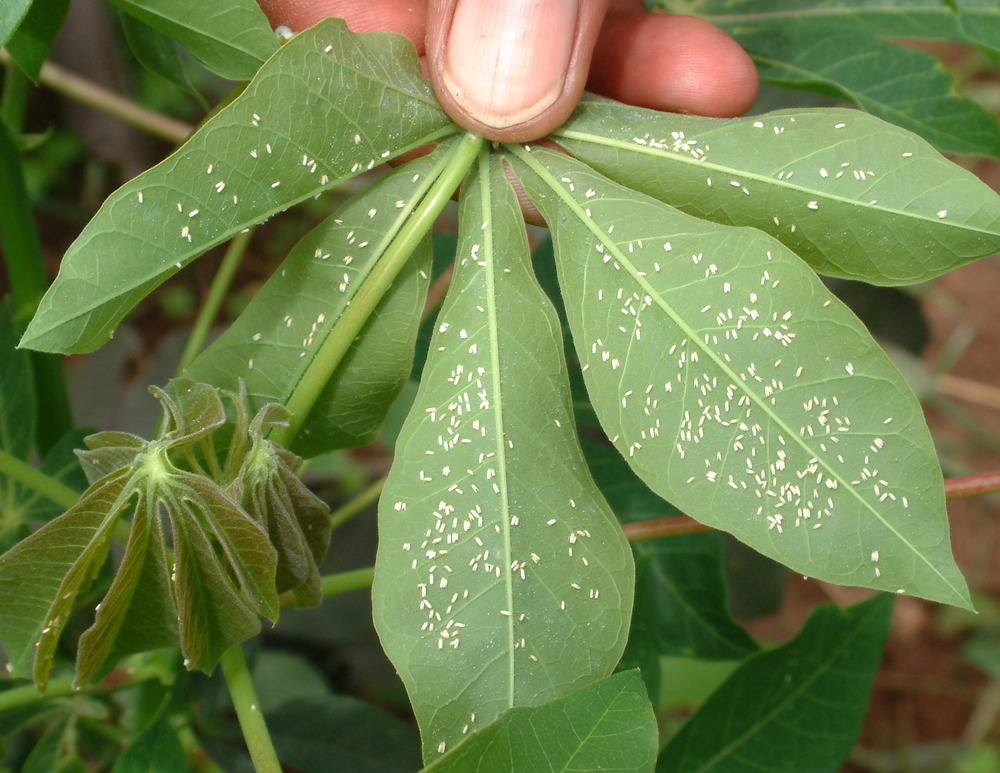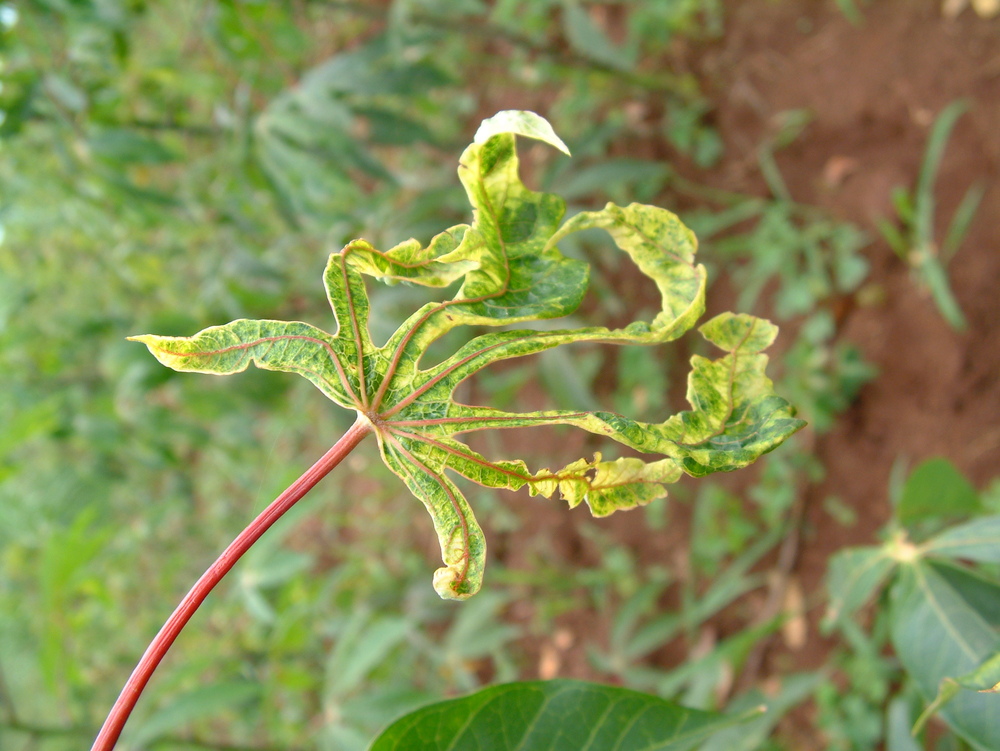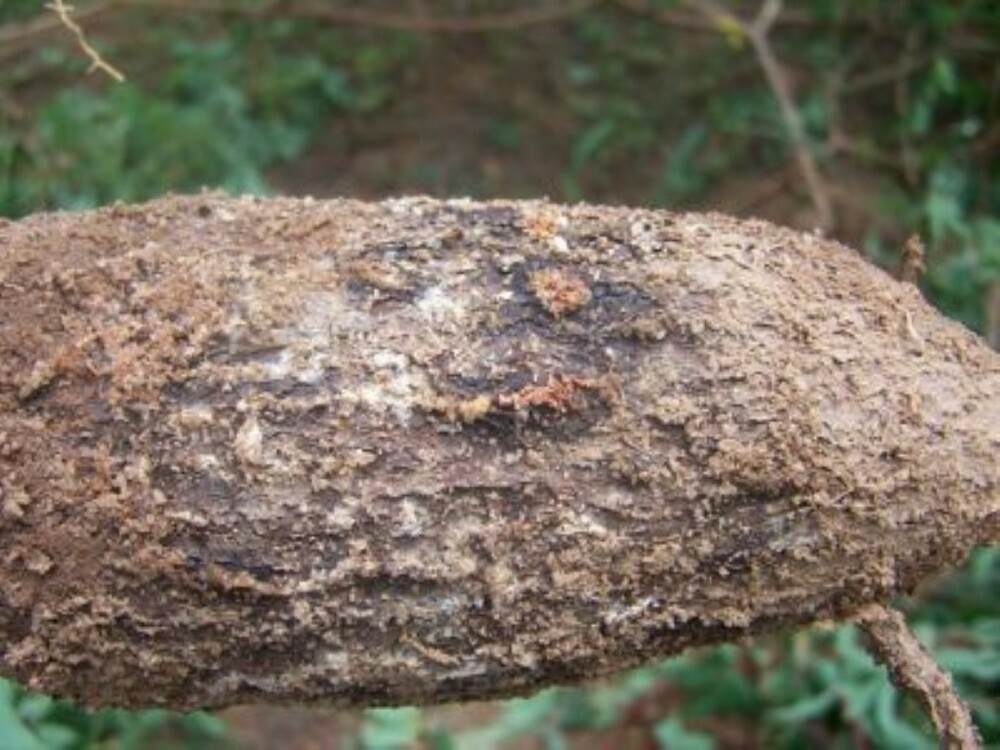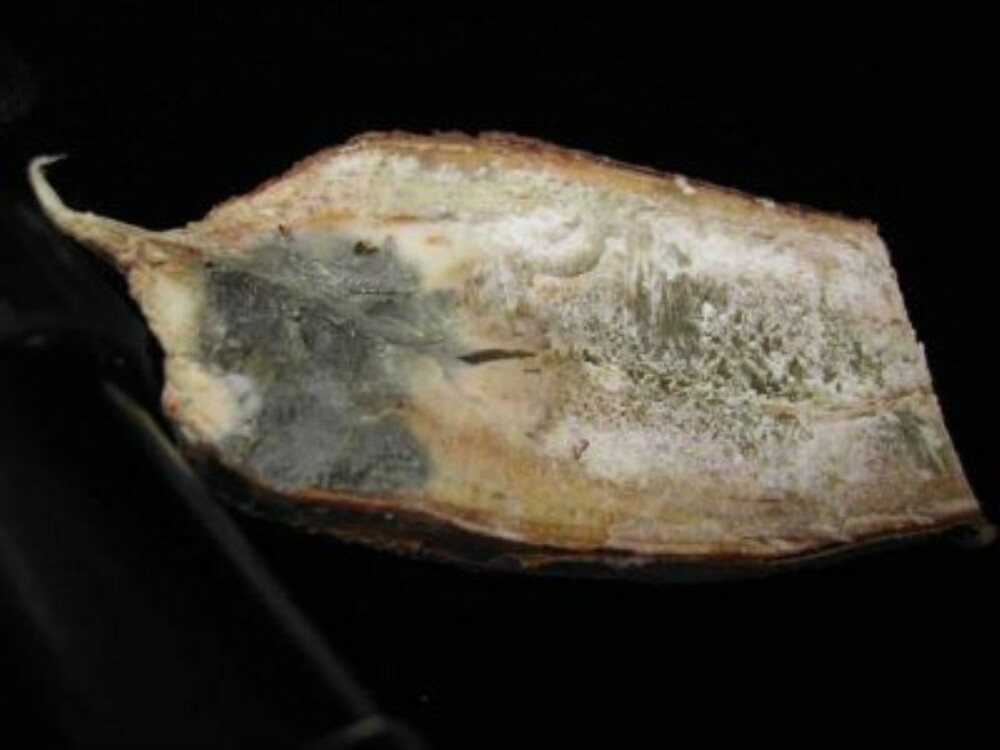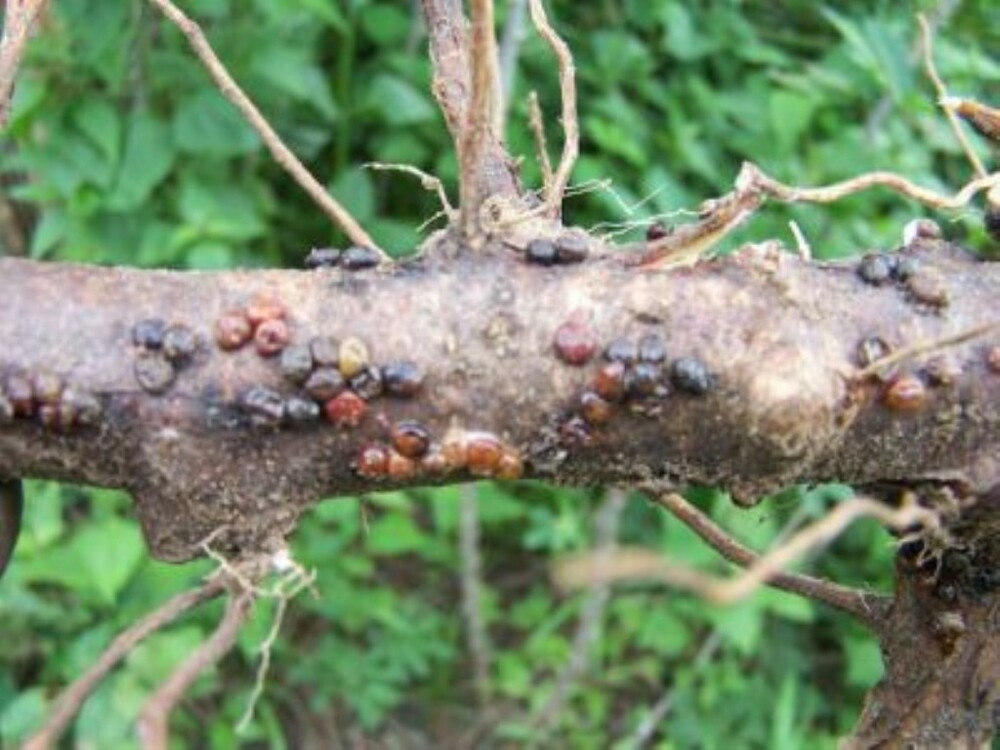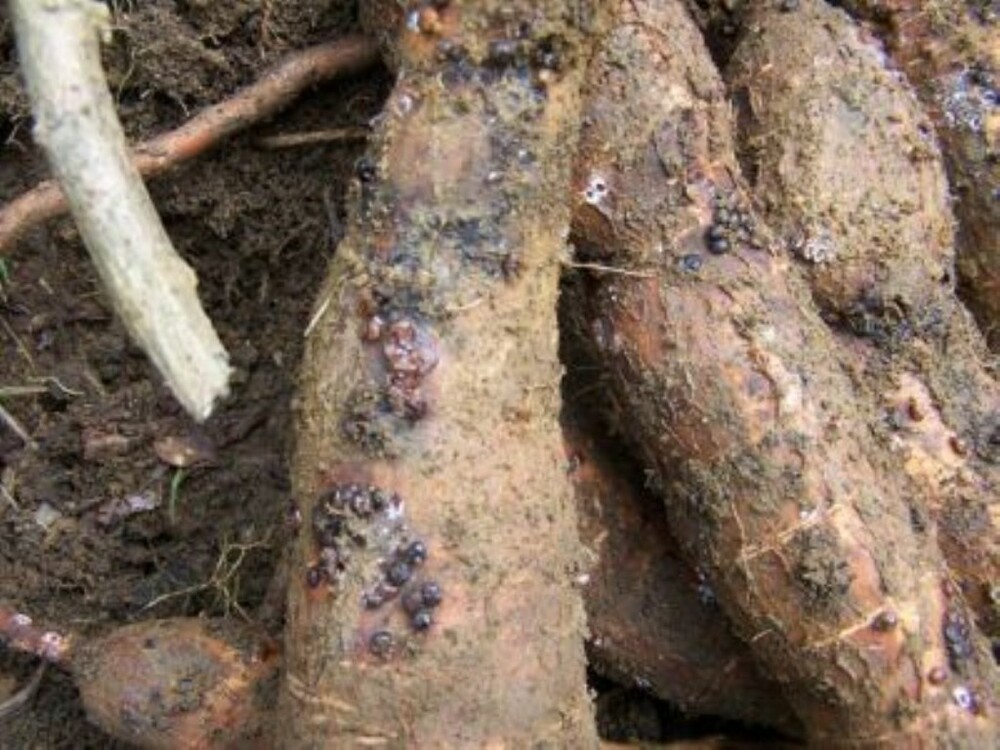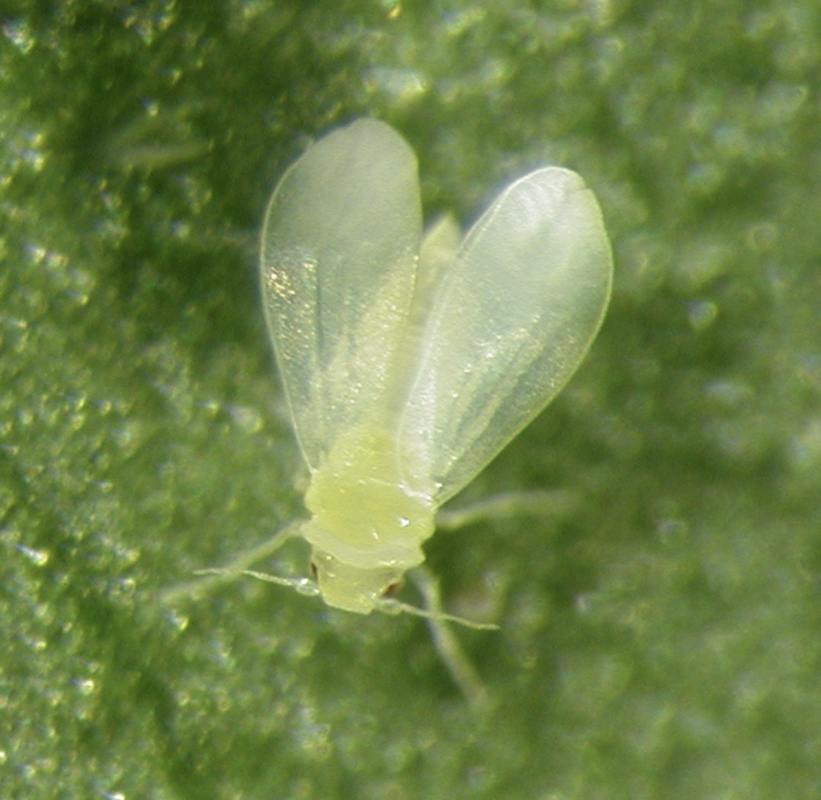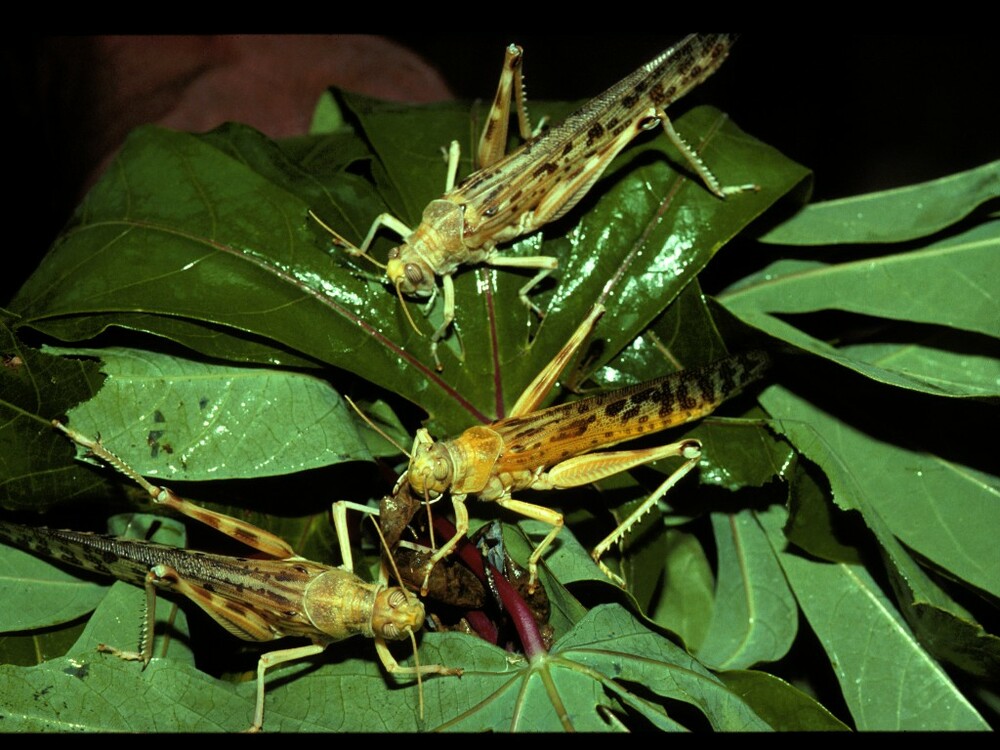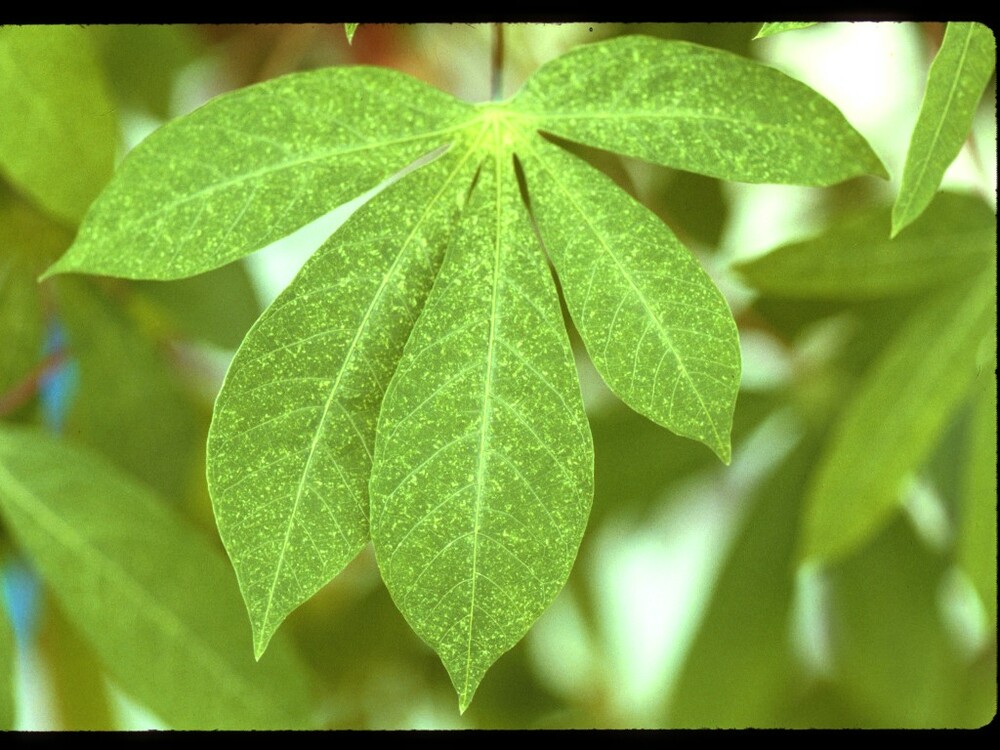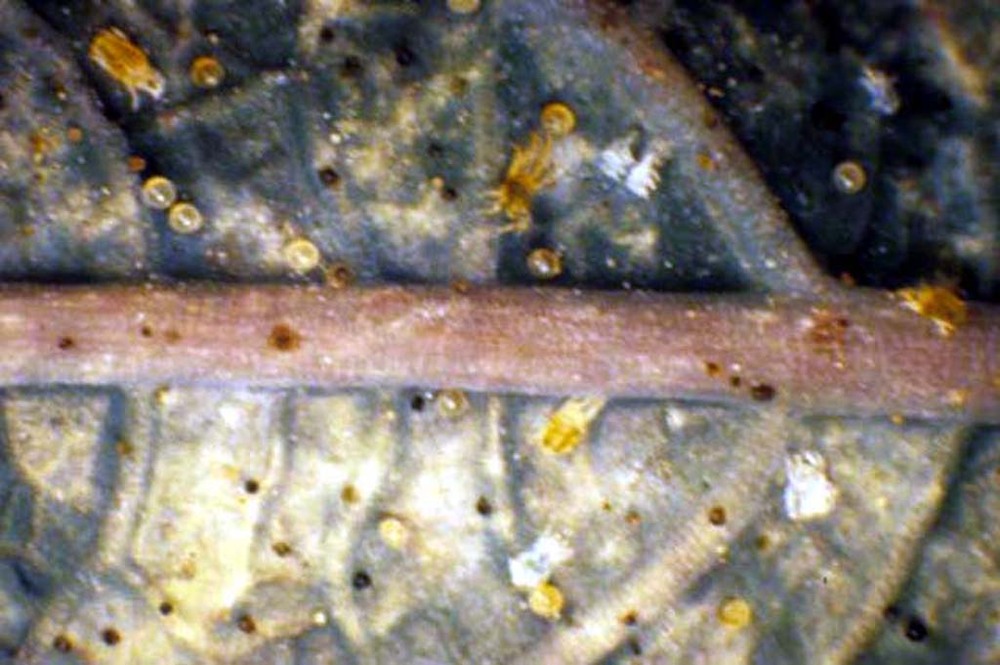Cassava (manioc)
Uses
Cassava root is eaten as a vegetable and is considered to be toxic in raw form which is why it must be cooked before being consumed. The root has a variety of applications, some of which include the production of flour, starch, or ethanol. Cassava leaves can supply a good source of vitamins and protein which can also be consumed after cooking. Cassava hay is used as animal feed and it plays a role in the production of adhesives, textiles, and cosmetics.
Description
Cassava, Manihot esculenta, is a perennial shrub in the family Euphorbiaceae grown primarily for its storage roots which are eaten as a vegetable. The cassava plant is a woody plant with erect stems and spirally arranged simple lobed leaves with petioles (leaf stems) up to 30 cm in length. The plant produces petal-less flowers on a raceme. The edible roots of the plant are usually cylindrical and tapered and are white, brown or reddish in color. Cassava plants can reach 4 m in height and is usually harvested 9-12 months after planting. Cassava may also be referred to as Brazilian arrowroot, manioc, yuca or tapioca and the origins of the plant are unknown. The plant is not known to occur wild but may have first been cultivated in Brazil. Cassava is the third-largest source of food carbohydrates in the tropics, after rice and maize. It is a major staple food in the developing world, providing a basic diet for over half a billion people. It is one of the most drought-tolerant crops, capable of growing on marginal soils.
Propagation
References
Adekunle, A. A., Dixon, A., Ojurongbe, J, Ilona, P, Muthada, L & Adisa, S. Growing Cassava Commercially in Nigeria. Information and Communication Support for Agricultural Growth in Nigeria (ICS-Nigeria). Available at: http://www.cassavabiz.org/agroenterpr.... [Accessed 10 November 14]. Free to access.
CABI Crop Protection Compendium. (2008). Manihot esculenta datasheet. Available at: http://www.cabi.org/cpc/datasheet/17585. [Accessed 05 November 14]. Paid subscription required.
James, B., Yaninek, J, Tumanteh, A., Maroya, N., Dixon, A., Salawu, R. & Kwarteng, J. (2000). Starting a Cassava Farm. IPM Field Guide for Extension Agents. International Institute for Tropical Agriculture. Available at: http://www.infonet-biovision.org/res/.... [Accessed 10 November 14]. Free to access.
Common Pests and Diseases
Diseases
Category : Fungal
Anthracnose Colletotrichum gloeosporioides
Symptoms
Cause
Comments
Management
Anthracnose usually does not cause large-scale economic damage to cassava and control is usually not necessary; avoid planting cuttings with cankers; if disease does occur crop debris should be removed and destroyed after harvestCassava Brown Leaf Spot Cercosporidium henningsii
Symptoms
Circular or irregular brown spots with darker margin between leaf veins on older leaves; centers of lesions may drop out givinf leaves a shothole appearance; if infection is severe, leaves may turn yellow, dry out and drop from the plant
Cause
Fungus
Comments
Disease emergence favored by high temperature and humidity
Management
Remove leaves and crop debris from around plants to prevent disease spreading; remove weeds from around crop
White leaf spot Cercospora vicosae
Symptoms
Cause
Comments
Management
Remove leaves and crop debris from around plants to prevent disease spreading; remove weeds from around cropWitches' broom Cassava witches'-broom phytoplasma
Symptoms
Cause
Comments
Management
Remove and destroy and plants suspected of being infected; remove all cassava debris from field after harvest; disinfect all tools and equipment between cuttings.Category :
Bad Image
Symptoms
Cause
Comments
Cassava Mites
Symptoms
Cause
Comments
CBLS
Symptoms
Cause
Comments
CBSD
Symptoms
Cause
Comments
CGM
Symptoms
Cause
Comments
CMD
Symptoms
Cause
Comments
CRM
Symptoms
Cause
Comments
Do Not Replant Do Not Replant
Symptoms
Cause
Comments
Healthy
Symptoms
Cause
Comments
Late Blight
Symptoms
Cause
Comments
Mealybugs
Symptoms
Cause
Comments
Nutrient Deficiency
Symptoms
Cause
Comments
Other
Symptoms
Cause
Comments
Potato Virus
Symptoms
Cause
Comments
Replant Replant
Symptoms
Cause
Comments
Unknown
Symptoms
Cause
Comments
Wilting
Symptoms
Cause
Comments
Category : Viral
Bud necrosis Unknown
Symptoms
Cause
Comments
Management
Only plant cassava cuttings taken from healthy plants which are free from necrotic lesions; space plants widely to allow good air circulation around plants and reduce disease incidence; remove weeds around plants; id disease is present, burn all necrotic stems and crop debris immediately after harvest to prevent spreadCassava Brown Streak Disease Cassava brown streak virus (CBSV)
Symptoms
Leaves:
- chlorotic or necrotic vein banding in mature leaves which may merge later to form large yellow patches
Stems:
- Brown elongated necrotic lesions on young stems
Tubers:
- necrosis of tubers
- roots develop knots
- internal tissues of roots and tubers stained brown and may rot due to secondary fungus infection
1. yellowing along veins on lower/older leaves ~ 3 months after planting
2. dark brown spots on upper green portion of stem ~ 6 months after planting
3. Severe cases- leaf drying, shoot die-back
4. In Tuber - Brown and hard rot when you cut into it. Causes malformation and root
constriction ~ 10 months after planting
Cause
Virus
Comments
Histroy and origin: Disease is prevalent in East Africa (Tanzania, Uganda and Kenya). It was first reported in 1930's in Tanzania and become endemic in later years. It is currently travelling from East Africa westwards and has been reported in the DRC. There is considerable concern that it will appear in the major West African growing regions, notably Nigeria. The virus is transmitted through whiteflies and stem cuttings. The origin of CBSD is suspected to have arisen from the viruses that are already present on the indigenous African flora. Virus structure and properties: The microscopic studies revealed that the virus is 650 nm long and earlier it was believe to be carlavirus. But further studies associate the virus to Ipomovirus. Cassva Brown Streak Disease is caused by two distinct species of single-stranded RNA (ssRNA) viruses, Cassava brown streak virus (CBSV) and Ugandan cassava brown streak virus (UCBSV), belonging to the genus Ipomovirus of the family Potyviridae. Economic loss: Cassava is an important stable crop in Africa and the continent produces an estimated 54% of the world's cassava production. As such the threat from CBSD seems inevitable due to its presence in many eastern African countries and its rate of transmission westwards to the major growing regions in Nigeria (which produced 30.8% of the world's supply). Though the economic loss from brown streak virus depends on region, cultivars and environment conditions, in general it is estimated up to 70% yield loss in susceptible variety is common with losses as high as 100% being observed in some regions. If the disease is unchecked it may cause 2 billion dollar in loss in Nigeria alone and lead to increase widespread poverty and malnutrition in West and Central Africa.
Management
Disease diagnosis: The first and foremost important aspect is to identify the disease correctly. Cassava brown streak disease varies in symptoms which made it difficult to identify in the field. It makes further complicated if both cassava brown streak and cassava mosaic diseases occur together. There are few techniques like serological and molecular methods are used to identify the virus in laboratory but have their limitations. Planting materials: Use only healthy and disease free cuttings for planting. Resistant cultivars: Plant cassava varieties that are more tolerant of brown streak virus such as Garukunsubire and Seruruseke. Roguing and sanitation: Remove and destroy any plants which are symptomatic of the disease including alternative hosts. Early Harvesting of tubers: Harvest crop early to avoid severe losses due to necrosis of tubers. Follow proper plant quarantine practices to avoid spread of virus to new region. Control insect vector: Whiteflies can be controlled by encouraging beneficial insects in the field like spiders, ladybird beetles etc. Use yellow sticky traps to monitor infestation of whiteflies. Spraying insecticidal soaps under leaf surface to kill flies.
Cassava Mosaic Disease African cassava mosaic virus (ACMV)
Symptoms
Discolored pale green, yellow or white mottled leaves which may be distorted with a reduced size; in highly susceptible cassava cultivars plant growth may be stunted, resulting in poor root yield and low quality stem cuttings. Note that infected plants can express a range of symptoms and the exact symptoms depend on the species of virus and the strain as well as the environmental conditions and and the sensitivity of the cassava host.
1. Patches of discolouration (chlorosis) in the leaves that vary from yellow to green.
2. The leaves display size variation and are often severely distorted.
3. Leaf blades sometimes fold depending on severity shrivel.
Cause
Virus
Comments
Disease is spread by infected cuttings and by whiteflies. The leaves are yellow, mottled and distorted. If leaves are yellow all over but are a normal size or there brown leaves that that does not indicate disease. Wild cassava (kisamvu cha mpira in Kiswahili) also hosts the disease. The disease was first observed in the late 19th Century in what is now Tanzania. It was not until work in 1938 that the disease transmission was confirmed to occur via grafting as well as vectored by the White fly.
Management
Varieties of cassava resistant to the virus are available in many countries, most traditional varieties of cassava grown in Africa are susceptible to the virus, seek advice from an agricultural extension on suitable varieties for your region (see below). Do not plant cuttings from plants with symptoms of disease; inspect plants regularly for symptoms of disease and remove and destroy any showing symptoms. Infected plants should be uprooted ('rouged'). Replace with disease resistant varieties such as 'Rwizihiza', 'Ndamirabana', 'Cyizere', 'Seruruseke', 'Mavoka', 'Garukunsubire' and 'Mbakungahaze'. There is no agrochemical agent or organic treatment for this disease. There are both control strategies for the whitefly vector.
Category : Bacterial
Cassava Bacterial Blight Xanthomonas manihotis
Symptoms
Small, angular, brown, water-soaked lesions between leaf veins on lower surfaces of leaves; leaf blades turning brown as lesion expands; lesions may have a yello halo; lesions coalesce to form large necrotic patches; defoliation occurs with leaf petioles remaining in horizontal position as leaves drop; dieback of shoots; brown gum may be present on stems, leaves and petioles
Cause
Bacterium
Comments
Most important bacterial disease of cassava; spread by water splash and infected tools; disease more severe in wet conditions; particularly destructive in South America and Africa; most important method of spread is probably through exchange of infected plant cuttings
Management
Rotate cassava crop with non-host; plow crop debris into soil after harvest or remove and burn it; prune infected parts from plant; propagate cuttings only from healthy plants; intercrop cassava with corn (maize) and melon
Category : Other
Cassava Healthy
Symptoms
Cause
Comments
Cassava Nutritional Deficiency
Symptoms
Cause
Comments
No Diagnosis
Symptoms
Cause
Comments
Category : Bacterial, Fungal
Cassava root rot disease
Macrophomina phaseolina
Botryodiplodia theobromae
Fusarium spp.
Symptoms
Cause
Comments
Management
Plant cassava in well-draining soils; remove and destroy all crop debris by burning; sanitize all tools after usePests
Category : Insects
African root and tuber scale Strictococcus vayssierrei
Symptoms
Cause
Comments
Management
Improve soil by adding organic matter to make soil more fertile; remove and destroy infested stems; do not plant cuttings with scaleCassava scale Aonidomytilus albus
Symptoms
Cause
Comments
Management
Plant material that is completely free of scale insects; remove and destroy infested stems from existing plantations; apply organic matter to soil to improve fertilityCassava whitefly Bemisia tabaci
Symptoms
Cause
Comments
Grasshoppers (Variegated grasshopper, Elegant grasshopper)
Zonocerus variegatus
Zonocerus elegans
Symptoms
Cause
Comments
Management
Hand pick any grasshoppers found on plants; locate any egg pods around cassava field and destroy to reduce grasshopper populations; biopesticides such as "Green Muscle" are available in South and West Africa which are very effective at reducing the grasshopper population; products containing neem have also given good control of variegated grasshoppersCategory : Mites
Cassava Green Mite
Mononychellus tanajoa
Mononychellus progresivus
Symptoms
Yellow stipping of leaves; chlorotic spots on leaves; chlorosis of entire leaves; if infestation is very high then leaves may be stunted and deformed; terminal leaves may die and drop from plant; pest responsible is a tiny green mite
1. Chlorosis (yellowing of leaves).
2. Leaves become shrivelled, mottled in serious cases
3. Check for the presence of mites on the underside of leaves
4. Yellow speckles evenly distributed on young leaves usually near the top ⅓ of the plant
Cause
Arachnid
Comments
Green spider mites are very common pests in most African growing regions and become problematic during the dry season; can cause significant tuber losses
Management
Plant tolerant cassava varieties where possible; plant at the beginning of the rainy season to encourage vigorous growth which allows plant to tolerate attack; intercropping with crops such as cowpea may reduce damage; introductions of the predatory mite Typhlodromalus aripo have been very successful at controlling the green spider mite in many regions of Africa













